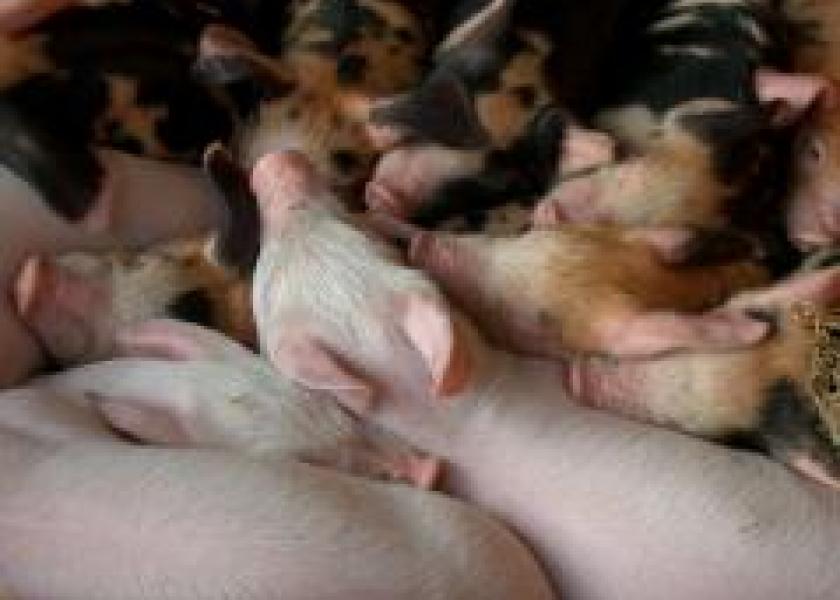New High-Energy Protein Ingredients for Weanling Pigs

By Stephanie Henry, University of Illinois
URBANA, Ill. – The use of soybean meal in diets fed to weanling pigs is limited due to the presence of anti-nutritional factors that young pigs can't tolerate. Therefore, other sources of protein, such as fish meal and plasma, are used in nursery pig diets. But there are other ingredients available to producers as well. Researchers at the University of Illinois have determined the nutritional value of three new protein products that have recently become available as feed ingredients for pigs.
Hans H. Stein, a U of I professor of animal sciences, and his team measured amino acid content and digestibility, digestible and metabolizable energy concentration, and phosphorus content and digestibility in dried fermentation biomass (DFB), in PEP50, and in PEP2+ fed to weanling pigs.
Dried fermentation biomass consists of the material left over when lysine has been extracted from fermentation tanks containing lysine-producing bacteria. PEP50 and PEP2+ are byproducts of the production of heparin. They consist of porcine intestinal mucosa that have been hydrolyzed with enzymes, ground, and combined with soybean meal in the case of PEP50 and a mixture of DFB and enzyme-treated soybean meal in the case of PEP2+.
DFB contained 77 percent crude protein, and the PEP50 and PEP2+ 53 and 59 percent, respectively. "All of these ingredients are relatively high in crude protein," Stein said. "And there's a lot of lysine in the dried fermentation biomass because extracting lysine from the biomass is not a 100 percent efficient process."
The digestibility of amino acids in DFB and PEP50 was generally at least as high as in fish meal and sometimes greater than in fish meal, while the digestibility of most amino acids in PEP2+ was about the same as fish meal or slightly less. However, the lower protein content in PEP50 and PEP2+ means that the concentration of digestible amino acids in these ingredients was less than in fish meal, Stein said.
"Producers now know what the digestibility of nutrients and energy in these products are so they can formulate diets based on digestible concentrations of nutrients," he said. "These are very digestible products, and very good sources of amino acids."
Results from the study also showed that the concentration of metabolizable energy in DFB was 5,236 kcal/kg, followed by 4,617 kcal/kg in PEP2, 4,512 kcal/kg in PEP50, 3,960 kcal/kg in fish meal, and 3,846 kcal/kg in corn.
The standardized total tract digestibility of phosphorus was greatest in DFB (96.9 percent) and PEP2+ (97.6 percent), followed by PEP50 (76.2 percent) and fish meal (68.5 percent). "However, fish meal contains approximately three times as much phosphorus as DFB, PEP50, and PEP2+, so the concentration of digestible phosphorus in these ingredients is still less than in fish meal. Producers who substitute these ingredients for fish meal would need to supplement the diets with additional phosphorus," Stein said.
Stein said that growth performance studies would be the next step. "We need to do some performance experiments to confirm that we can use 5, 6, or 7 percent of each of these ingredients in the diets, and take out fish meal and maybe even some plasma as well."
The study, "Nutritional value of dried fermentation biomass, hydrolyzed porcine intestinal mucosa products, and fish meal fed to weanling pigs," was recently published in the Journal of Animal Science and is available at http://www.journalofanimalscience.org/content/91/6/2802.full. R.C. Sulabo, J.K. Mathai, J.L. Usry, B.W. Ratliff, D.M. McKilligan, J.D. Moline, and G. Xu were co-authors of the study.







